Abstract
An inhibitor extracted from short day treated Acer negundo leaves was compared to abscisic acid in 4 different solvent systems. The chromatographic properties of abscisic acid and the inhibitor were in very close agreement. Treatment of Acer negundo plants under non-hardening preconditions (long days) with either the inhibitor or abscisic acid increased hardiness after a hardening period of 3 weeks at 40°. A gibberellin-inhibitor relationship was further studied by making comparison of extracts of plants subjected to either 4 weeks of long days, long days + 5° nights, or short days. These tests indicated that gibberellin-like activity was greatest when the treatment included long days. Abscisic acid-like levels were highest when the treatments consisted of short days or long days + 5° nights. Since the latter groups are the most capable of developing hardiness, the hardening process appears to be more closely related to a build-up of abscisic acid levels than a reduction of gibberellin levels.
Full text
PDF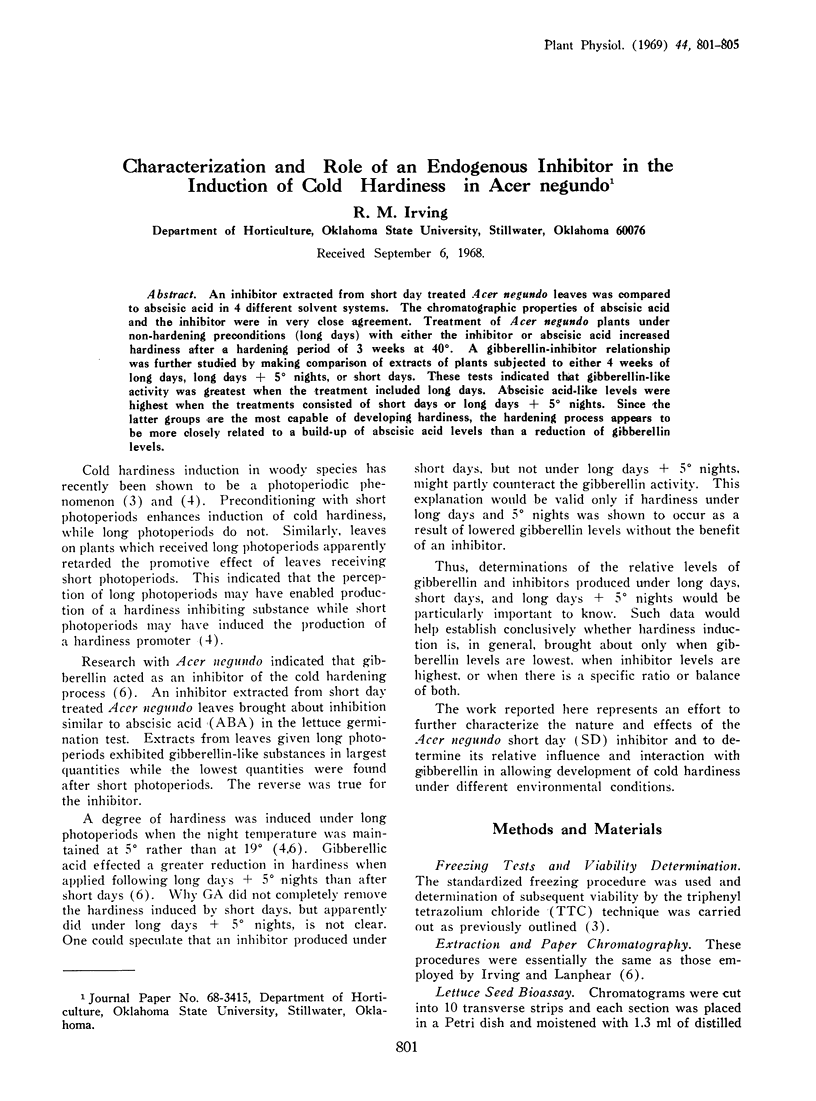
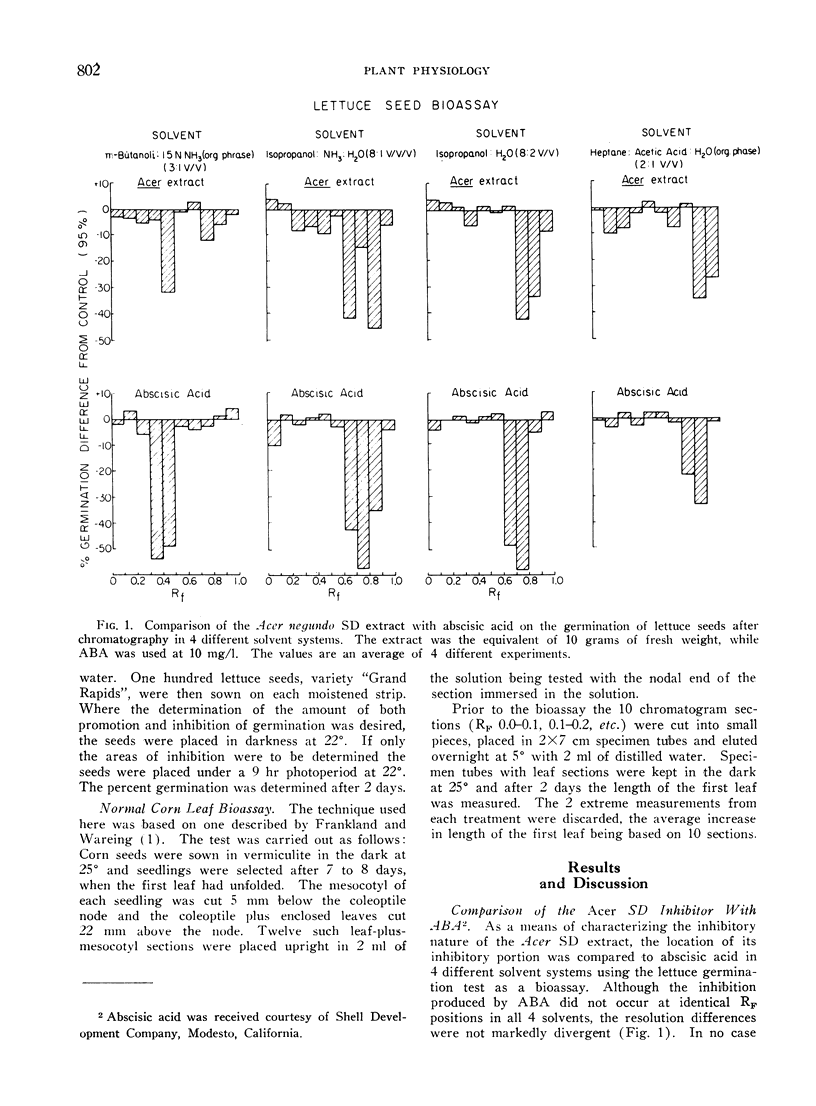
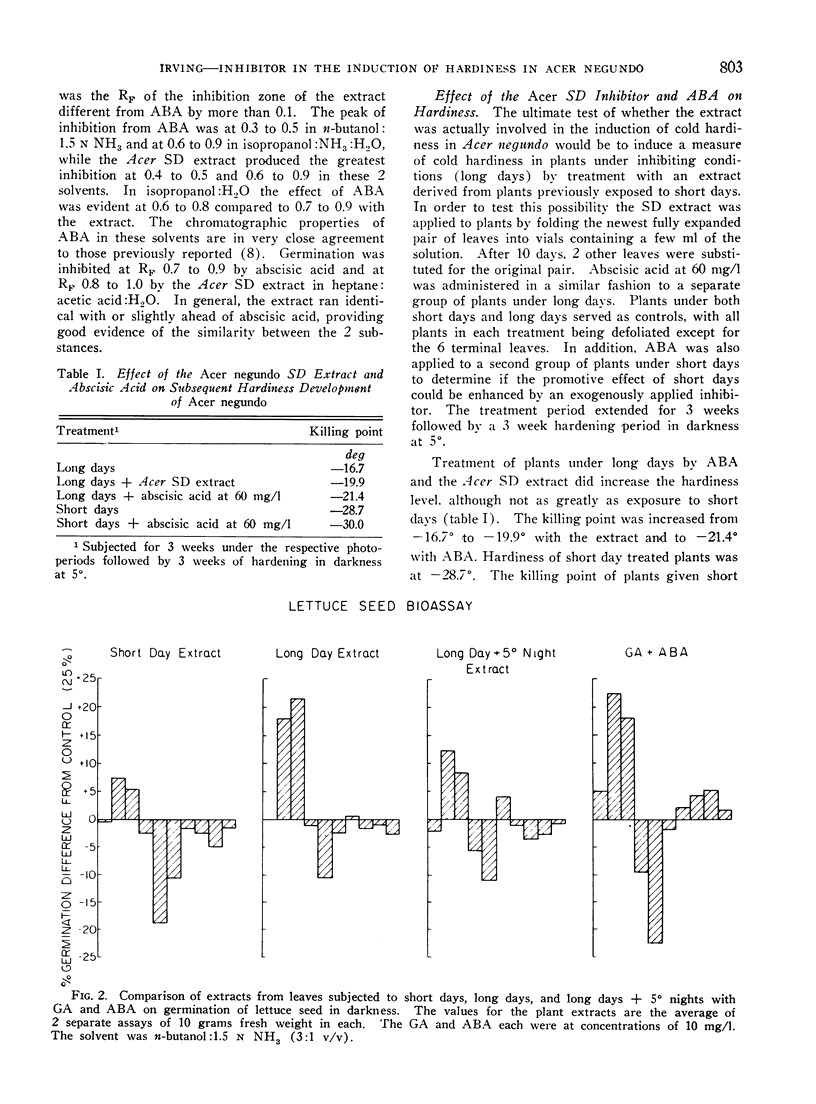
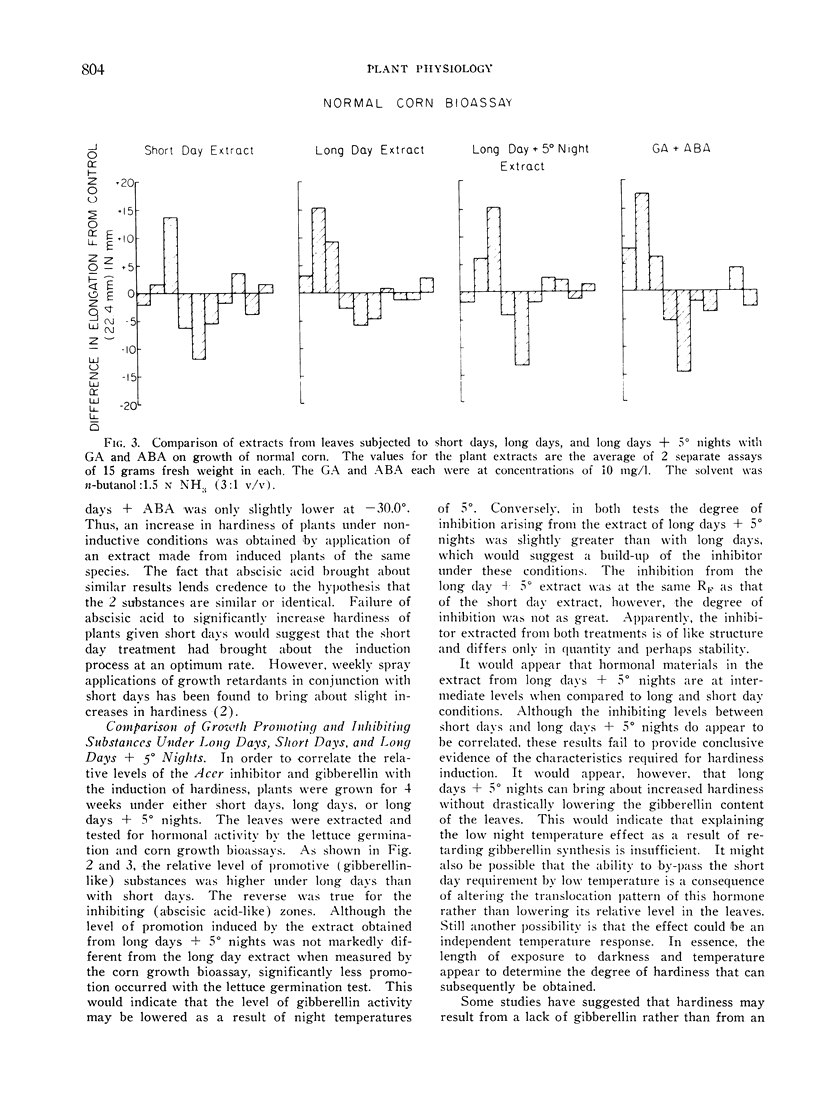
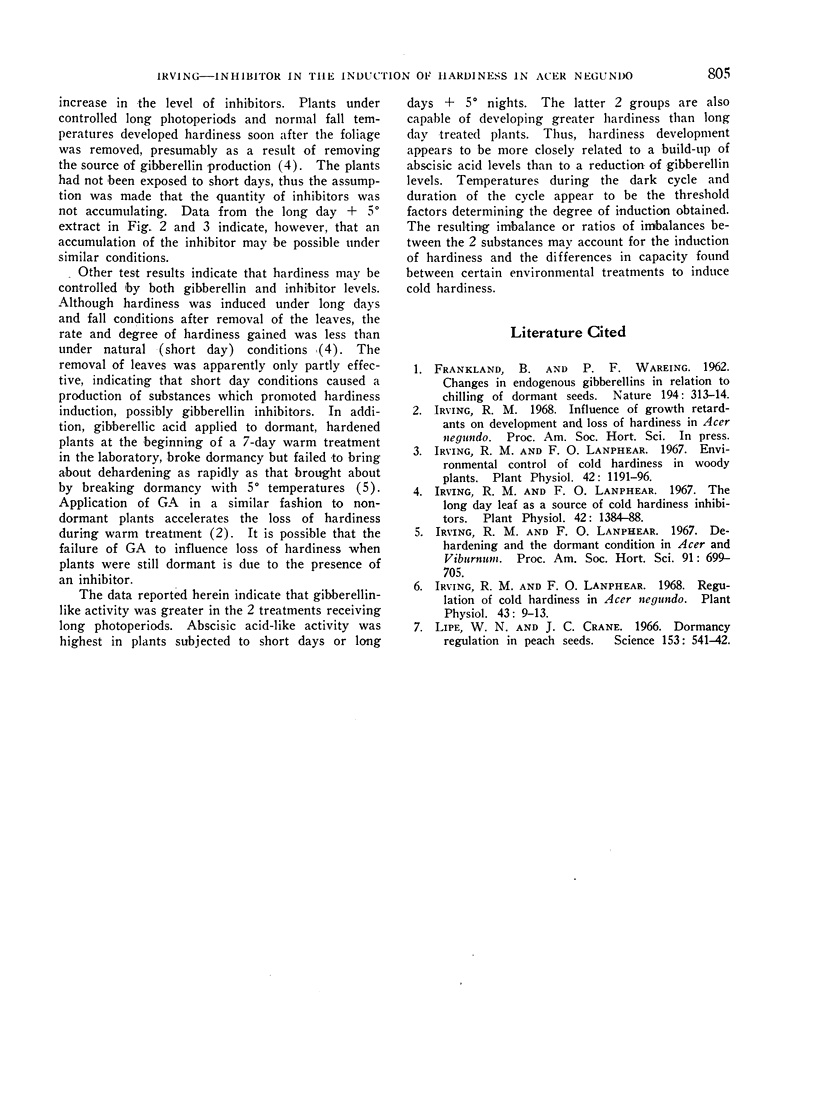
Selected References
These references are in PubMed. This may not be the complete list of references from this article.
- Irving R. M., Lanphear F. O. Environmental control of cold hardiness in woody plants. Plant Physiol. 1967 Sep;42(9):1191–1196. doi: 10.1104/pp.42.9.1191. [DOI] [PMC free article] [PubMed] [Google Scholar]
- Irving R. M., Lanphear F. O. Regulation of Cold Hardiness in Acer negundo. Plant Physiol. 1968 Jan;43(1):9–13. doi: 10.1104/pp.43.1.9. [DOI] [PMC free article] [PubMed] [Google Scholar]
- Lipe W. N., Crane J. C. Dormancy regulation in peach seeds. Science. 1966 Jul 29;153(3735):541–542. doi: 10.1126/science.153.3735.541. [DOI] [PubMed] [Google Scholar]
- Mac Irving R., Lanphear F. O. The long day leaf as a source of cold hardiness inhibitors. Plant Physiol. 1967 Oct;42(10):1384–1388. doi: 10.1104/pp.42.10.1384. [DOI] [PMC free article] [PubMed] [Google Scholar]


